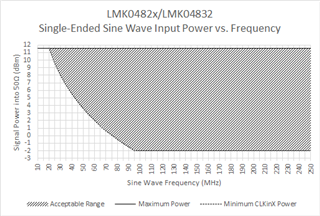Hi everyone,
I am using LMK04828B with following Connections for the output frequency of 200MHz.
CLKin0 input frequency – 25MHz from TCXO
CLKin1 input frequency – 25 MHz from signal generator
OSCin frequency – 100MHz from VCXO
I am using dual PLL mode with CLKin0 input.
I observed PLL1 not locking problem in one of the production unit.
I am using following register configuration. (File is attached here)
I have done following test for PLL1 loss of locking issue.
1. I changed PLL2_N_CAL value (0x0165 register) = PLL2_N. But Still PLL1 was not locked.
2. I checked with CLKin1 input from Signal Generator. PLL1 was locked. Hence I suspected CLKin 0 25MHz from TCXO. But I probed both working and not working module CLKin0 inputs. There is no difference between working and not working board.
3. I read all the register values what are written through SPI at PLL1 not locking condition. (attached here)
4. As per the read back status of following registers, PLL1 is entered into Holdover mode. Please refer the following Table and clarify my queries
| Address | Readback Data from PLL1 & PLL2 locking Module | Readback Data from PLL1 (not locking) & PLL2 locking Module | Observations and Queries |
| 0x182 | 6 | 0 | PLL1 Lock Detect is not high. In both condition I have not give input at CLKin1 Pin. But CLKin1 LOS is active in working module alone. Why? |
| 0x184 | 48 | 88 | |
| 0x185 | FF | 0 | DAC value is changing to 511 instead of 512. Will it impact PLL1 Locking? |
| 0x188 | 0 | 10 | PLL is entered into Holdover state Why? |
Please provide your support.
Thanks,
Vignesh6253.Attachments.zip


